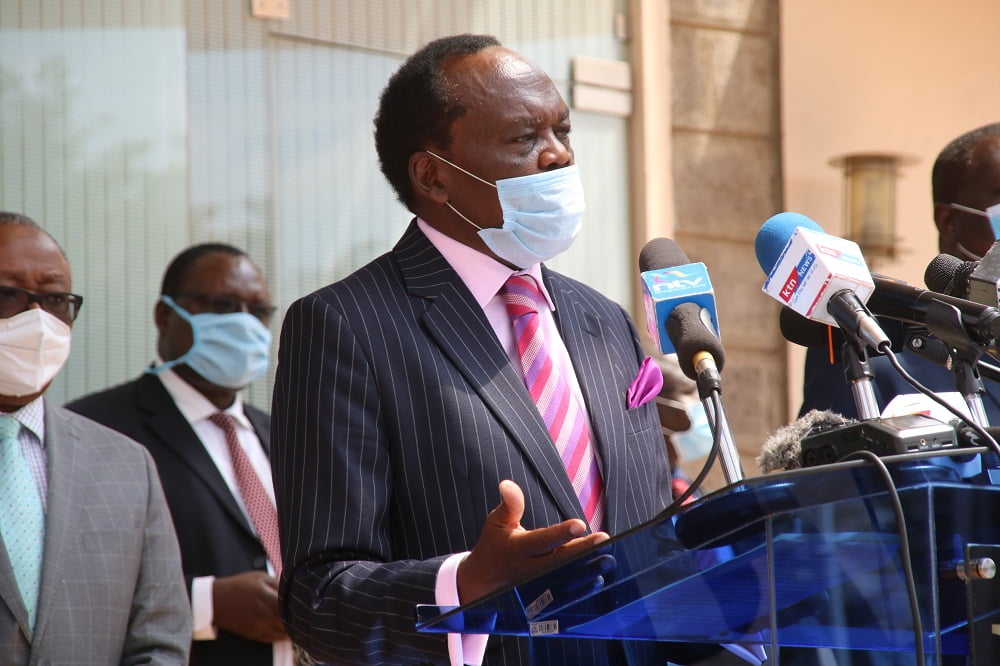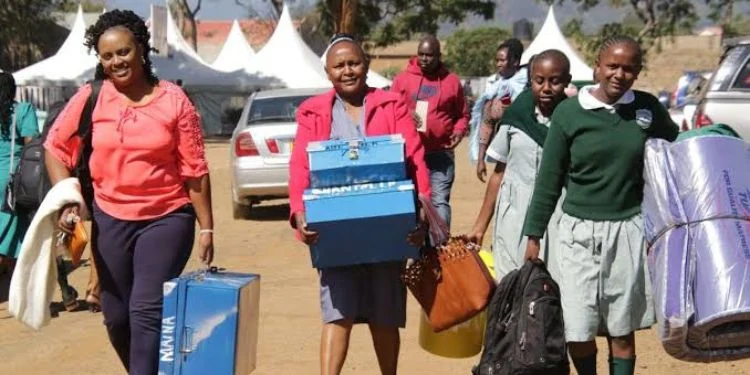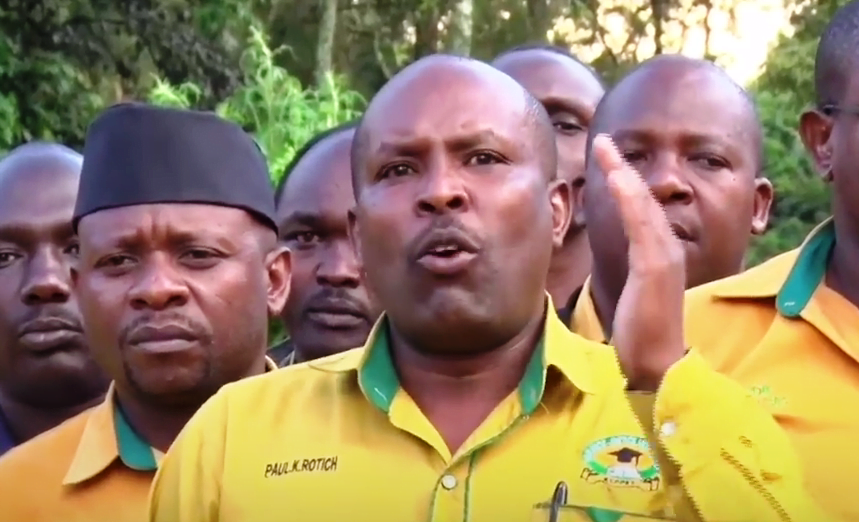By Felix Wanderi
A survey carried out by Kenya National Bureau of Statistics has revealed that 233,300 learners did not resume after the reopening of schools in January 2021.
The data was obtained a survey covering the period between March 2020 and March 2021. Enrollment in secondary schools reduced by 5.7 per cent from 3.5 million in March 2020 to 3.3 million in March 2021.118,176 boys failed to return to school while 115,124 girls didn’t show up.
The number of registered KCSE special needs candidates increased from 1,672 in 2019 to 1,888 in 2020. Males increased from 936 to 1061 while females increased from 736 to 827, the survey revealed. 37.7% of the candidates had physical disability, 29.8% hearing disability, 26.5% had low vision while 6% had visual impairment.
The number of secondary schools which reopened in March 2021 increased from 10,413 to 10458. The growth was despite the fact that hundreds of private schools closed down during the lockdown as they were unable to sustain overhead costs during the same period.
The overall enrolment in primary schools reduced from 10.2 million in March 2020 to 10 million in March 2021. Enrolment in private schools decreased by 11.1 per cent whereas that of public schools increased by 0.6 per cent.
The reduction in enrolment mainly affected upper primary grade 5 to 8. This decline can partly be attributed to teenage pregnancies, early marriages and other socio-economic factors such as employment as a result of prolonged closure of schools.
In June this year, a report commissioned by President Uhuru Kenyatta seeking to assess the impact of Covid-19 on the education sector, disclosed that some 375,000 learners in primary and secondary schools dropped out of school during the closure of learning institutions to stem the spread of Covid-19. 165,000 adolescent girls aged between 10 and 19 either got married or were impregnated during the same period and 12,424 candidates who registered for 2020 KCPE didn’t take the test.
The number of female teachers recorded an increase of 9.0 per cent compared to an increase of 6.5 per cent for male teachers. Teachers with bachelor’s degree constituted 95.5 per cent of the total number of secondary school teachers in public schools while diploma holders accounted for 2.9 per cent.
The total number of teacher trainees rose by 10.5 per cent from 11,111 in 2019 to 12,276 in 2020. The number of teacher trainees in secondary diploma teacher training colleges declined by 40.2 per cent to 1,218 in 2020 from 2,037 in 2019. Female teacher trainees in diploma teacher training colleges accounted for 45.1 per cent of the total enrolment in 2020.
Enrolment of first year’s teacher trainees in diploma teacher training colleges stood at 254 in 2020 down from 402 in 2019.
In 2020, student enrolment in many national polytechnics reduced. Only Kenya Coast and Kitale National Polytechnics recorded notable growth in enrolment.
In 2020, Nyandarua Technical Training College was elevated to a national polytechnic and its enrolment stood at 1,398.
Enrolment in other TVET institutions increased from 328,500 in 2019 to 364,100 in 2020. Enrolment of male students in Public Technical and Vocational Colleges rose by 16.9 per cent to 76,400 in 2020, while that of female students grew to 53,600 in 2020.
The number of students placed by Kenya Universities and Colleges Central Placement Service (KUCCPS) to public universities increased by 32.1 per cent to 95,075 in 2020/21 from 71,977 in 2019/20 academic year, while those placed in private universities significantly increased by 58.5 per cent to 27,756 in 2020/21.
Female students placed to universities to pursue degree courses accounted for 43.0 per cent in 2020/21 compared with 41.2 per cent in 2019/20 academic year. The number of students pursuing diploma courses went down from 64,539 in 2019/20 to 56,455 in 2020/21.
Students placed to pursue certificate and artisan courses reduced by 27.4 per cent and 16.6 per cent respectively during the same period.
Total enrolment in public and private universities was expected to increase by 7.3 per cent to 546,700 in 2020/21 from 509, 500 in 2019/20 academic year. The growth in university enrolment is attributed to an increase in the number of government sponsored students placed to universities.
Enrolment in public universities is expected to go up by 9.5 per cent to 452,100 in 2020/21 from 412,800 in 2019/20 academic year while that in private universities is expected to reduce to 94,610 in 2020/21 from 96,628 in 2019/20.
Total number of students enrolled in diploma courses declined by 6.5 per cent to 55,351 in 2020/21.
Enrolment of male students for diploma and certificate in public universities is estimated to rise by 13.7 per cent to 20,592 in 2020/21 while that of female students is expected to increase by 26.2 per cent to 16,652 in 2020/21.
Number of diploma and certificate students in private universities is estimated to decline by 35.1 per cent to 18,107 in 2020/21.
The number of public constituent university colleges increased from 6 in 2019 to 7 in 2020 due the establishment of an additional public constituent university college.
The number of chartered private universities increased from 19 to 20 in 2020, while the number of universities with Letters of Interim Authority (LIA) remained 13.
The number of approved public university programmes declined by 12.8 per cent from 3,605 in 2019 to 3,142 in 2020.
The decline is attributed to the discontinuation of programmes following a quality assurance audit by the Commission for University Education.
During the review period, the number of approved private university programmes increased by 5.0 per cent from 635 in 2019 to 667 in 2020.
The number of approved public university constituent college degree programmes went up from 106 in 2019 to 123 in 2020, while those of private university constituent programmes went up from 28 in 2019 to 30 in 2020.
The increase in approved programmes in public and private constituent colleges and private universities is attributed to approval of new programmes by the Commission for University Education.
The amount of loans awarded to HELB applicants from public universities went up by 5.6 per cent to KSh 9.5 billion in 2019/20. Amount awarded to loan applicants from private universities increased from Sh1.2 billion in 2018/19 to Sh 1.7 billion in 2019/20. Loans awarded to students in TVET institutions increased significantly from Sh1.6 billion in 2018/19 to Sh 4.1 billion in the same period.
Amount of HELB bursaries awarded to applicants from public universities decreased by 1.7 per cent from Sh126.5 million in 2018/19 to Sh124.3 million in 2019/20. The number of bursary applicants from private universities who were awarded bursaries stood at 2,828 in 2019/20, representing 12.0 per cent of all bursary applicants from private universities. Amount of bursary awarded to applicants from TVET institutions increased from Sh 84.0 million in 2018/19 to Sh95.7 million in 2019/20.
Amount of funds disbursed for the successful research funding applications was Sh 59.9 million in 2019/20. During the same period, the number of applications for multidisciplinary research funding was 811 of which only 58 were successful. In 2019/20, the amount of funds disbursed for the successful multidisciplinary research funding applications stood at Sh506.73 million.
The total expenditure for the Ministry of Education is expected to go up by 8.9 per cent from Sh464.7 billion in 2019/20 to Sh506.2 billion in 2020/21 financial year.
Recurrent expenditure for the Ministry is expected to increase by 7.1 per cent to Sh481.2 billion in 2020/21.
Development expenditure is expected to increase by Sh9.7 billion from Sh15.3 billion in 2019/20 toSh 25.0 billion in 2020/21, mainly attributable to increase in funding for the implementation of COVID-19 prevention measures in educational institutions.






